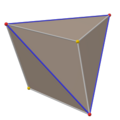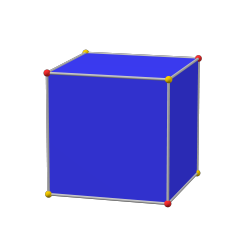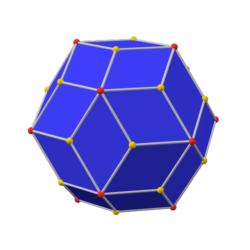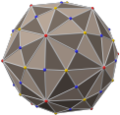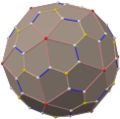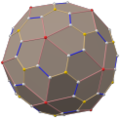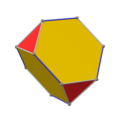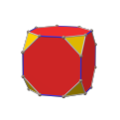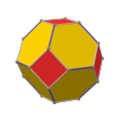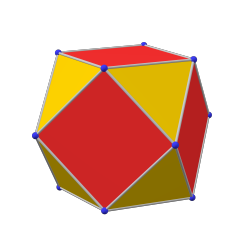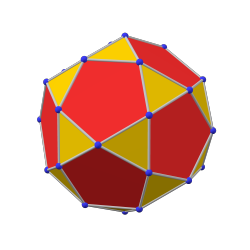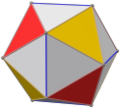| Triakis tetrahedron | |
|---|---|
 | |
| Type | Catalan solid, Kleetope, Non-ideal |
| Faces | 12 |
| Edges | 18 |
| Vertices | 8 |
| Symmetry group | tetrahedral symmetry |
| Dihedral angle (degrees) | 129.52° |
| Dual polyhedron | truncated tetrahedron |
| Properties | convex, face-transitive, Rupert property |
| Net | |
 | |

In geometry, a triakis tetrahedron (or tristetrahedron [1] , or kistetrahedron [2] ) is a Catalan solid, constructed by attaching four triangular pyramids to a tetrahedron.


